No-tillage agriculture: A legacy born in Kentucky
No-tillage agriculture: A legacy born in Kentucky
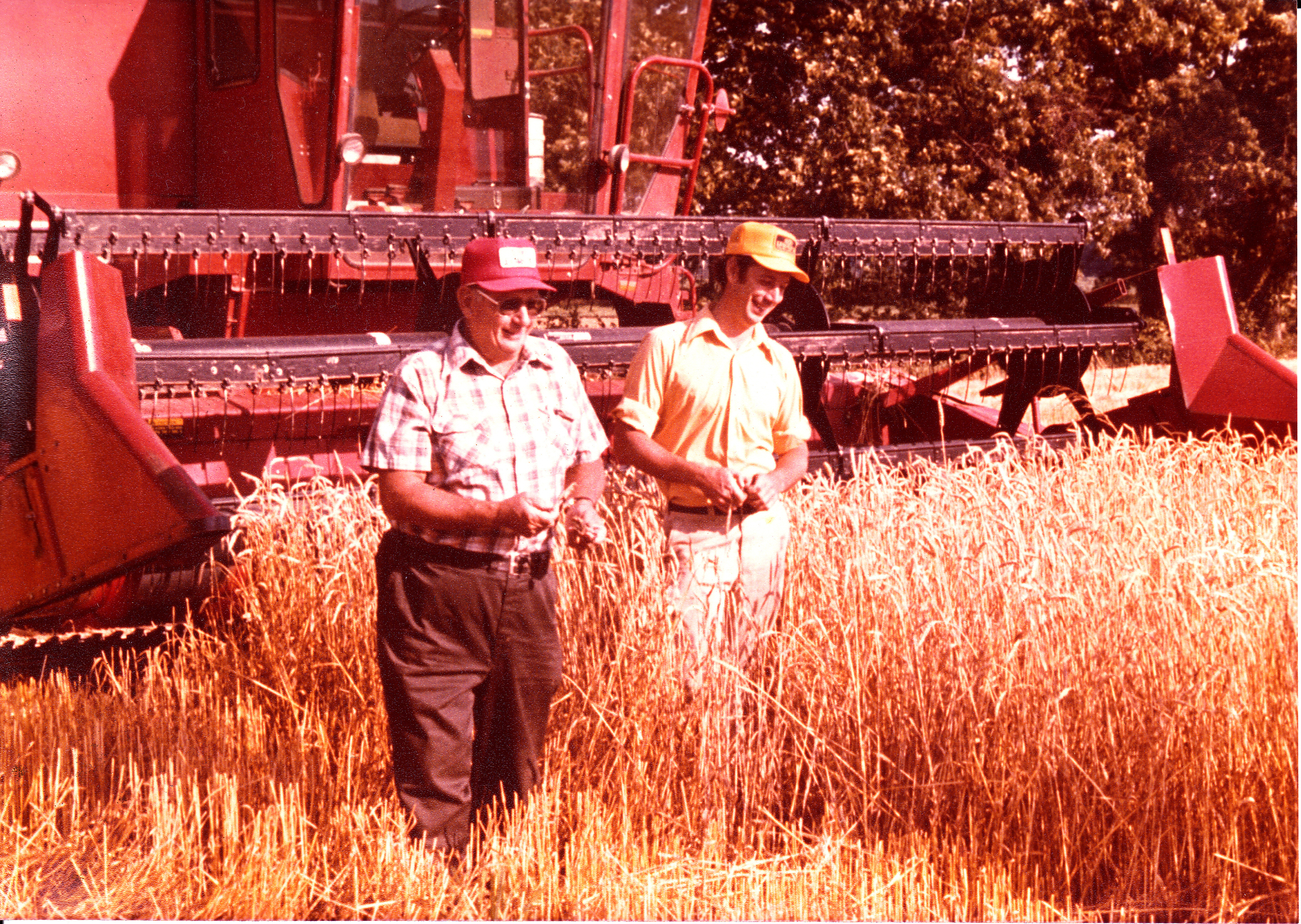
To view the entire photo gallery, click here.
In the 60 years since the first commercial no-tillage planting in Christian County, the agricultural practice continues to improve soils and water quality on millions of acres across Kentucky, the United States and the world.
It all began with 0.7 acres of no-till corn and the late Harry Young, a Herndon producer, determined to find a better way to farm.
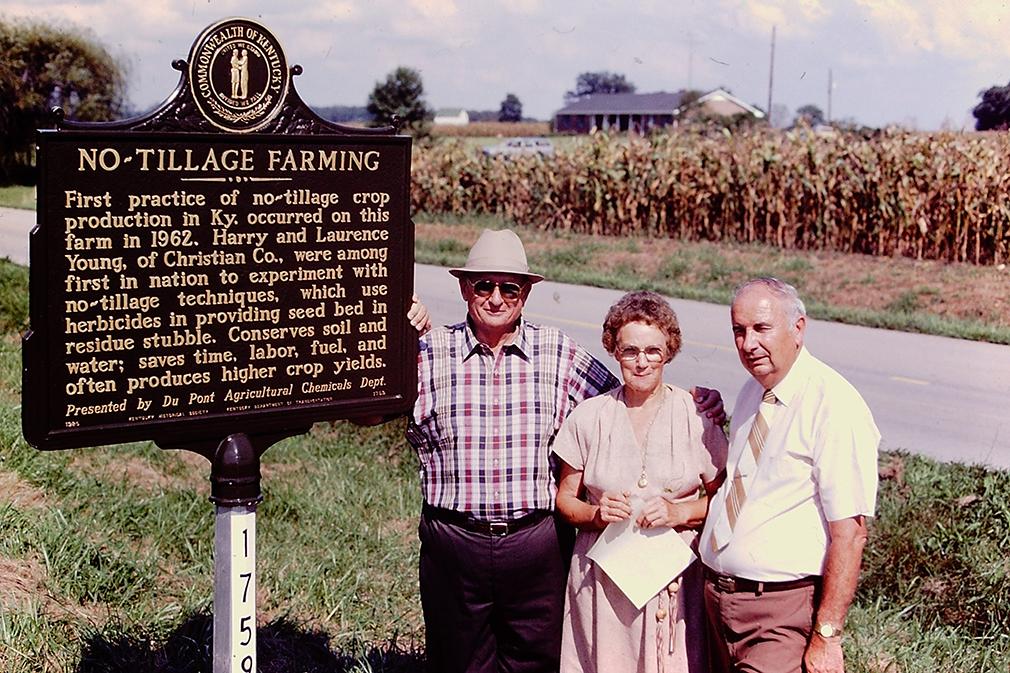
Harry Young, Marie Young and Shirley Phillips, UK agronomist, pose next to the No-Tillage Historical Marker on the Youngs' farm.
“My dad wanted to make the world a better place and help farmers better manage their land,” said John Young, Harry Young’s son. “He set out along with Shirley Phillips (University of Kentucky agronomist) to turn the United States and world onto a completely different type of agriculture.”
Harry Young planted his first commercial no-till crop during a time when Kentucky farmers were faced with eroding soils that were becoming increasingly difficult to farm.
“All of our topography is rolling, and people farmed it using conventional tillage because they had to. We had so many ditches. It was a real mess,” said Lloyd Murdock, professor emeritus in the UK College of Agriculture, Food and Environment. “Kentucky was headed for a situation that would have put us out of crop production had it not been for no-tillage.”
Today, the number of producers implementing no-tillage continues to increase well beyond the state’s boundaries. Farmers practice no-tillage on more than 104 million acres in the United States, according the 2017 U.S. Department of Agriculture’s Census of Agriculture.
John Young said his father learned about no-till production while on a 1961 farmer field trip to Dixon Springs, Illinois, led by Reeves Davie, Christian County agriculture agent with the UK Cooperative Extension Service, and by reading the book, “Plowman’s Folly” by Edward H. Faulkner. Harry Young selected the site for his first commercial no-tillage planting on land that bordered the road because he wanted everyone to see what he was doing−even if it failed.
“My dad loved to talk about farming and no-tillage,” John Young said. “The only problem we had when dad planted the first crop was people were driving off the road because they were looking at the field to see what was going on.”
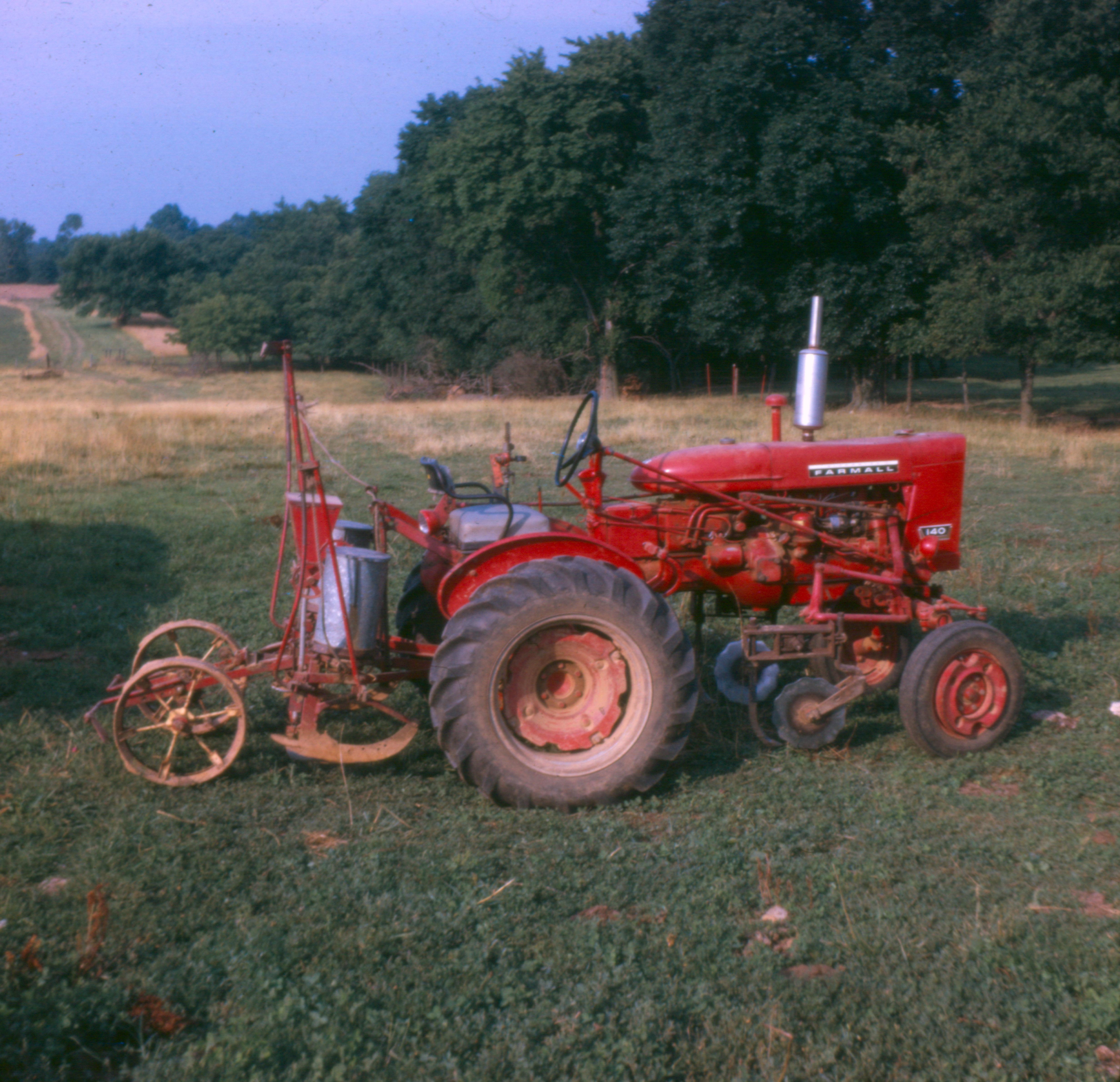
The planter Harry Young used to grow his first no-till crop. Photo courtesy of Alexander Young.
Area farmers, including Howard Martin and Allen Franks from neighboring Todd County, followed Young’s lead and began experimenting with no-tillage in the 1960s. Martin borrowed Franks’ Allis Chalmers 333 no-till planter to produce his first crop.
“In the early days, Harry Young was an inspiration,” said Martin, who sat on the Hopkinsville Elevator board of directors with Young. “I started no-tilling because I thought it would save us on labor costs and help conserve our soil.”
An Ohio transplant, Franks was new to the state when he began practicing no-tillage in the 1960s. He quickly realized its benefits. A decade later, he would be among the first adopters of no-tillage wheat.
“I started no-tilling wheat in the late 1970s,” Franks said. “We ended up with two bushels less in our no-till fields compared to our tilled land then but that didn’t pay for the time, labor and fuel that comes with tillage.”
Not as easy as it sounds
A self-proclaimed “never tiller” for 25 years, Martin will be the first to admit that no-till farming wasn’t easy in its infancy. His second year of planting no-till corn ended up in disappointment.
“The second year we grew no-till corn, it was a wet planting season. I could not get a good stand, and I ended up throwing out the seed,” Martin said. “It would be 15 years before I would try no-till corn again.”
But Martin did not give up on no-till production, and UK specialists worked with farmers like him to help make no-tillage work for their systems. John Young said it was evident early on that UK had a strong commitment to making the practice work.
“UK really came on board in a big way,” John Young said. “They have been sold whole heartedly on it from the beginning and have played an important role in no-till research.”
Research to make the system work
Over the years, UK specialists have conducted numerous no-tillage research projects. Bob Blevins, UK soil scientist, started his research plots at UK’s Spindletop Farm in Lexington in 1970. Those plots are still active today and are one of the longest continuous no-till research sites in the world. Additional early UK researchers who studied no-tillage included Grant Thomas, Wilbur Frye, Lloyd Murdock, Jim Herbek, Bill Witt, Morris Bitzer, Ron Phillips and Scott Smith.
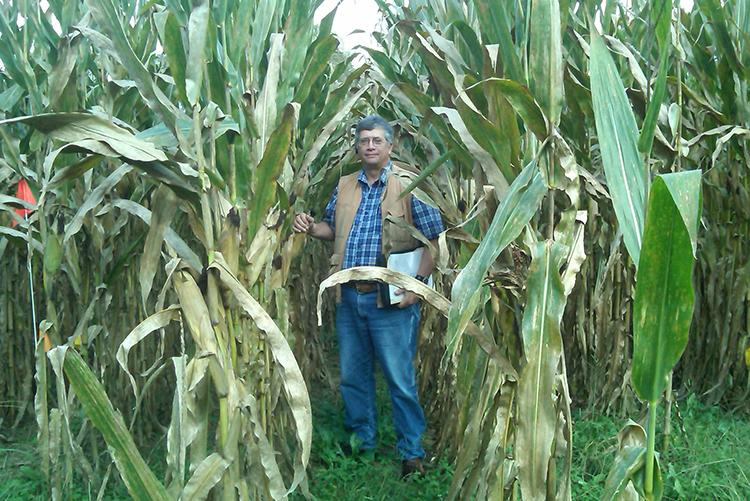
UK soil scientist John Grove in one of his no-till nitrogen source trials. Photo by Greg Schwab.
“When I arrived at UK to study soil fertility in 1981, no-tillage already had a very solid start,” said John Grove, UK soil scientist. “One of the things that helped make no-tillage so successful was that there was a large group of scientists all doing research to make it a workable system.”
Allen Franks and his son Tim have relied on their county agents and specialists at UK’s Research and Education Center in Princeton to help them with their no-till challenges over the years.
“We have annoyed county agents for years,” Allen Franks joked. “Specialists at Princeton have done test plots on our farms. If we have a problem, we call someone.”
Murdock said no-till’s success in the state has been due to the farmers willing to collaborate with UK researchers. Murdock and Herbek, fellow UK professor emeritus, were instrumental in no-till wheat research and adoption.
“Farmers have really contributed a lot, and I really enjoy working with them,” Murdock said. “They come to us with problems that they are facing every day, and there are thousands of them thinking about how they can do things better.”
Advancements and inventions
As time passed, advances in weed control made it possible for more farmers to practice no-tillage.
Kentucky farmers also made many advances to make no-tillage production easier to adopt for farmers across America. Among the inventions was a row cleaner patented by Howard Martin that helped the seed make better contact with the soil. Murdock would do some of the first research on the row cleaner at the UKREC in Princeton.
“Dr. Murdock has been a blessing to our no-tillage adventure and put in extensive time on our farm,” said John Martin, Howard Martin’s son. “He keeps inserting things to keep us excited. He has definitely been our cheerleader.”
Environmental improvements
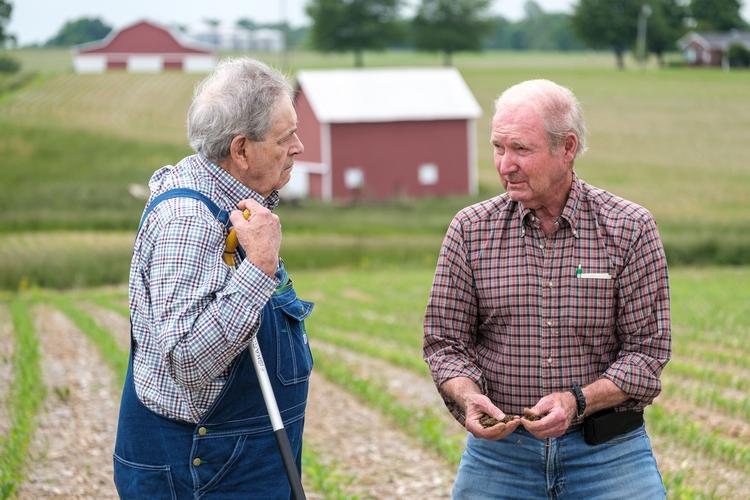
Todd County farmer and no-till row cleaner inventor Howard Martin, left, and Lloyd Murdock, UK professor emeritus discuss Martins soil quality on a recent trip to his farm. Photo by Matt Barton, UK agricultural communications.
The improvements to the soil have been dramatic for no-till farmers.
“Two or three years after beginning no-till, we noticed the water penetrated into the soil better, even with our fragipan soils, but we didn’t understand why,” John Martin said. “We didn’t know at that time that the soil was alive.”
Curt Judy, Todd County agriculture and natural resources extension agent, has worked in multiple counties over his 40 years with the UK Cooperative Extension Service. He has observed obvious differences between counties with a lot of no-till adoption and counties with very little.
“When I was an agent in another county that did not have a lot of no-till adoption, there would be mud in the roads a foot deep after a rain,” Judy said. “With no-till, the soil stays in place and nutrients and chemicals stay put too.”
Chad Lee, director of the UK Grain and Forage Center of Excellence, echoed Judy’s response. Lee has worked on numerous no-tillage studies including the system’s response to irrigation, cover crops, row spacing, high input and high management scenarios.
“The soil structure is so much more resilient,” he said. “You can see a big difference in the soil’s behavior in no-till and conventional-till fields during heavy rainfall events. The no-tillage system does a much better job at preventing erosion and runoff.”
Grove has conducted numerous no-tillage studies over the years in areas such as nutrient response, cover crops, rotation and variety differences. Additionally, he managed the Blevins plots upon Blevins’ retirement and started his own long-term, no-till rotation study.
“While both tillage systems have had a stronger response to nitrogen rate with time, the no-till system has remained superior throughout the entire study in terms of yield and long-term soil productivity,” he said. “This is likely due to an increase in soil organic matter in the no-till system, which also serves as a source of nitrogen. No-till also has a higher yield response in dry years, because it conserves water better than conventional tillage systems.”
Only way to farm
In 2021, the Franks sold all their large tillage equipment to make room in their equipment shed.
“We haven’t pulled a chisel plow in 20 years, and most of our fields have not been tilled for 30 years,” Tim Franks said. “Our yields have trended up. Our organic matter has trended up. The biggest tractor we own has 150 horsepower.”
The Martins’ corn yields have increased from 140 bushels per acre in 1976. In 2006, they won the Kentucky corn yield contest with 275 bushels per acre. According to their farm analysis records, they also have above-average soybean yields. Improved yields coupled with lower labor and fuel costs have allowed the Martins to expand their farm over the years to land in Todd and Muhlenberg counties.
“Our labor went to zero. It’s basically a one-man show now until harvest. It is amazing to make these yields on this soil type,” Howard Martin said. “We don’t believe that there is any other way to farm.”
Like their fathers before them, John Martin and John Young both currently sit on the Hopkinsville Elevator Co. board of directors.
Continued commitment to Kentucky farmers
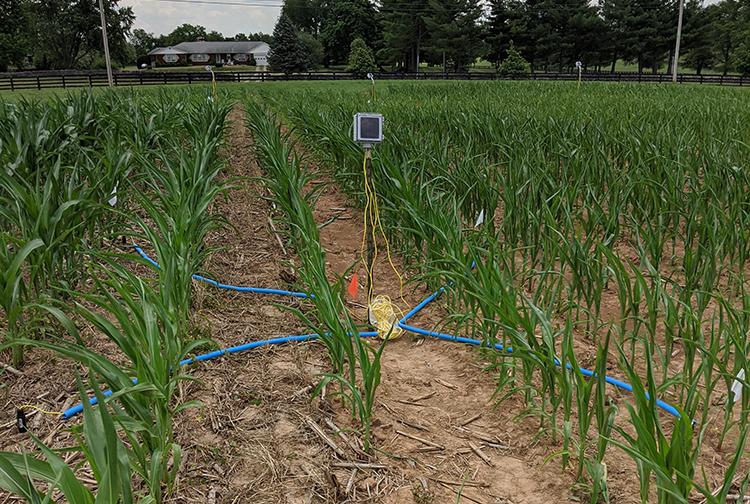
Current no-till research at UK includes this project by Hanna Poffenbarger, UK soil scientist, that measures moisture differences in no-till and conventional-tilled fields. Photo by Hanna Poffenbarger.
UK continues its strong commitment to no-tillage agriculture as researchers continue to work with the next generation of no-till farmers.
“Thirty years ago, we focused a lot of our research on ways to make no-tillage work but now it is assumed,” Lee said. “Our job now is to continue to work with producers to advance the practice. One of the latest things I’m interested in is strip planting of cover crops. Producers say it gives them a better stand, so I want to document what they are seeing.”
Hanna Poffenbarger, UK assistant professor, manages the Blevins and Grove continuous long-term no-till research studies.
Her current research focuses on ways cover crops can complement a no-tillage system. She sees no-tillage adoption growing as producers become more aware of its carbon sequestration benefits and looks forward to helping producers navigate a new set of challenges.
“I want to find ways to further build soil health and help producers manage nutrients, weeds and pests in these carbon-rich systems,” she said.
Family legacy
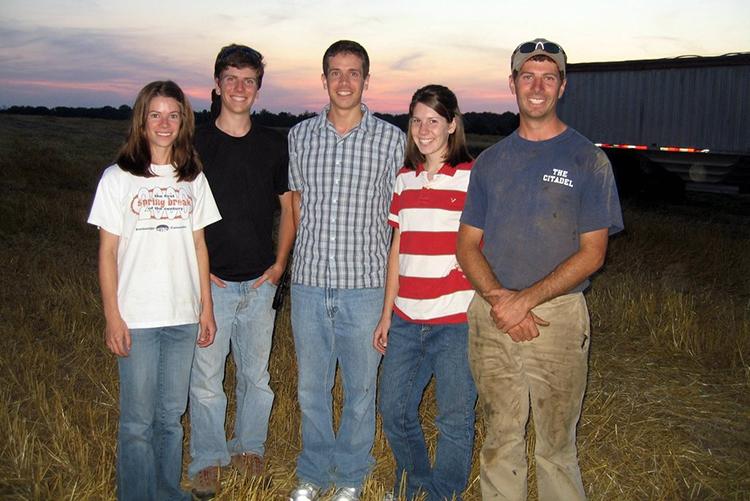
The next generation of Young family farmers from left Mary, Jeffrey, Matthew, Laura and Alexander. Photo courtesy of John Young.
John Young and his son Alexander continue to farm today on more than 6,700 acres. Their operation is 100% no-till.
“I know nothing but no-tillage,” Alexander Young said. “Other farms that do not practice no-tillage have deep gullies and erosion right up to the property line. I don’t have any intentions of going backward.”
While Alexander and John run the day-to-day operations of the farm, all of John Young’s five children return in the fall each year to help with harvest. Their family’s no-tillage legacy is extremely important to them.
“To me, no-till farming is at the nexus of stewardship, efficiency and legacy,” said Jeff Young, an agribusiness professor at Murray State University and John Young’s son. “It has been said that if we take care of the land, then it will take care of us. What’s more, disturbing the ground that feeds us any more than necessary costs money, time and valuable organic matter. My family’s role in this agricultural revolution gives not just a sense of pride, but one of accomplishment that we are part of the solution to more than one of mankind’s shared challenges.”
Extension Plant & Soil Sciences Research UKREC

